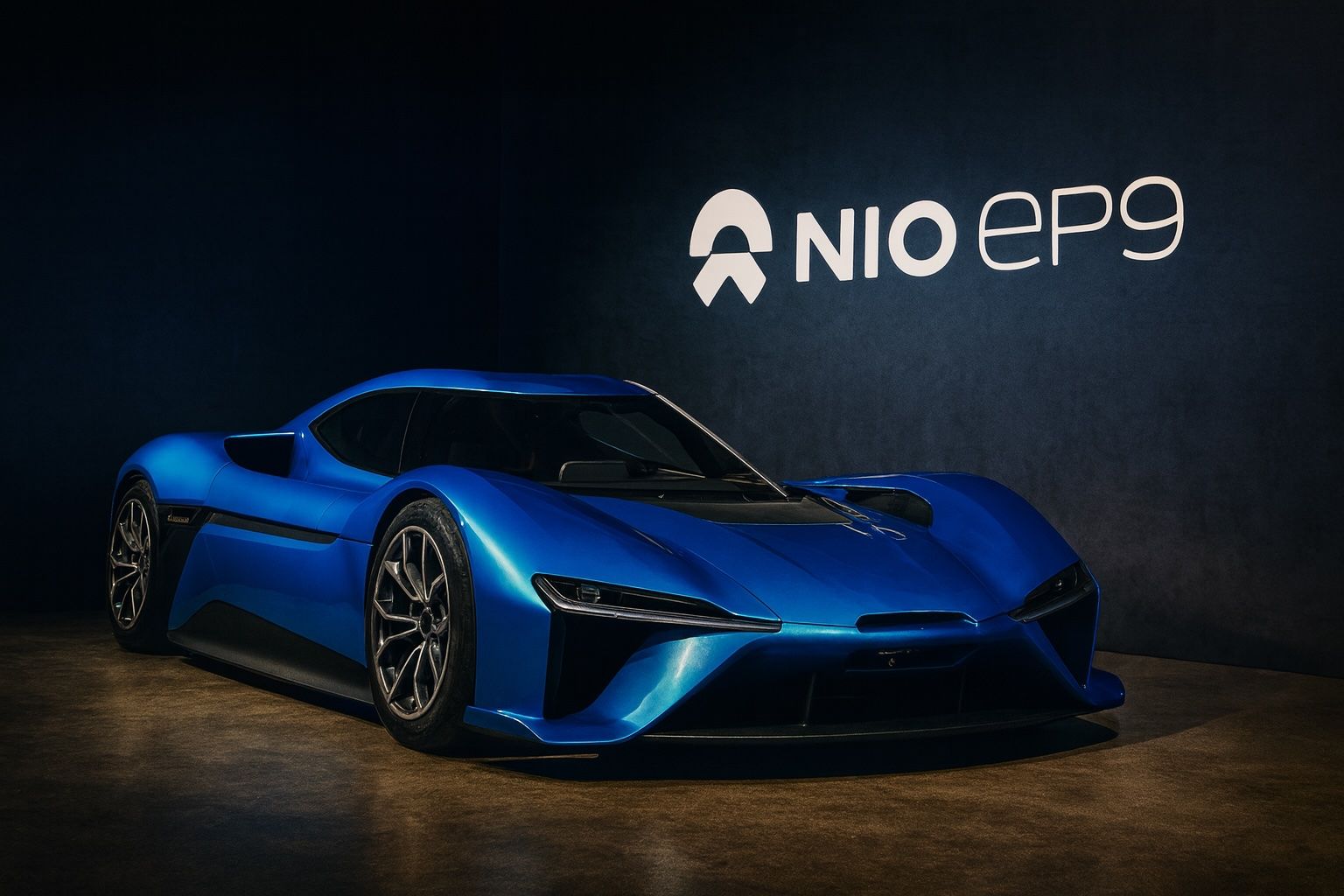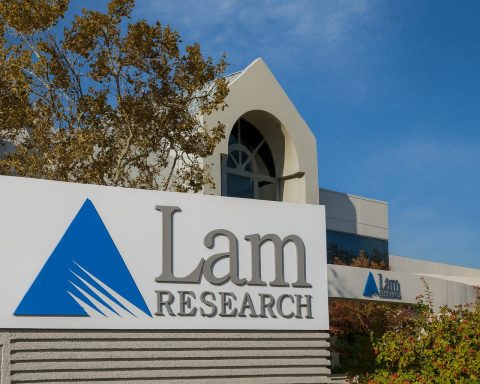- Surging Sales: NIO Inc. delivered a record 87,071 electric vehicles in Q3 2025 (up 40.8% year-on-year), including 34,749 units in September alone (+64% YoY) [1] [2]. This sales boom lifted NIO’s stock to a recent high of around $7.70 in early October.
- Lawsuit Plunge: On Oct. 16, Singapore’s sovereign wealth fund GIC filed a lawsuit accusing NIO of inflating ~$600 million in revenue, triggering a stock plunge of about 10% intraday [3] [4]. Shares closed around $6.30 after the news, erasing much of the month’s gains.
- Stock Up in 2025: Despite volatility, NIO’s NYSE-listed shares trade near $6.50–$6.80, roughly 50% higher than at the start of 2025 [5]. The stock rallied ~41% in July amid optimism over new models and cost-cutting plans [6], but remains far below its all-time high (~$62 in 2021).
- Investor Sentiment Split: Bulls tout NIO’s expanding lineup (new Onvo and Firefly brands) and improving margins, expecting a break-even quarter by Q4 2025 [7]. Bears note NIO’s continued losses and warn it may stay unprofitable until 2029 on a full-year basis [8]. A fraud lawsuit and China’s EV price war add to near-term risks.
- Competition Fierce: NIO faces stiff competition from Tesla, XPeng, Li Auto, and BYD. XPeng’s sales and stock growth have outpaced NIO’s in 2025 [9] [10], and Li Auto is already profitable [11]. NIO’s unique battery-swap services and premium branding aim to differentiate it, but investors are in “show me” mode pending clear profits [12].
Stock Price: Volatile Climb in 2025
NIO’s stock has experienced a wild ride this year. After starting 2025 near multi-year lows (around $4–5), the Chinese EV maker’s New York-listed shares surged over 40% in July 2025 alone [13]. The rally was fueled by optimism around NIO’s new affordable models and aggressive cost-cutting efforts. By September, NIO traded in the mid-$7 range – near the top of its 52-week range of ~$3.02 to $7.64 [14]. Year-to-date, the stock was up about 50% as of mid-October [15], reflecting renewed investor confidence after a brutal 2022–2023 for Chinese EV stocks.
However, volatility remains high. In early October, NIO’s American Depositary Shares (ADS) briefly hit $7.70 before a series of developments sent the price gyrating [16]. By Oct. 15, the stock closed at $6.82 [17]. Then came the lawsuit news on Oct. 16, when shares plunged ~10% intraday to around $6.05, their lowest since September [18]. The stock recovered slightly to the mid-$6 range, but the episode wiped out roughly $2.4 billion in market value in one day [19].
Even with the pullback, NIO’s 2025 performance has sharply outpaced domestic rival BYD (whose stock slid ~30% from its peak amid China’s price war) [20]. Yet NIO still trades at a fraction of its early-2021 highs, underscoring both the potential and the caution in this volatile EV equity.
Record Deliveries Drive Optimism
Underpinning the bullish case for NIO is its rapidly growing sales. In the third quarter of 2025, NIO achieved all-time high delivery numbers, shipping 87,071 vehicles – a 40.8% jump from Q3 2024 [21] [22]. September alone saw 34,749 deliveries, up 64.1% year-on-year, marking NIO’s second consecutive monthly record [23] [24]. These robust gains were fueled by the company’s expanded multi-brand strategy:
- Onvo (mass-market SUV lineup): NIO’s new family-oriented “Onvo” sub-brand contributed significantly. In September, Onvo vehicles made up about 15,246 deliveries, nearly half of NIO’s total [25]. The Onvo L90 SUV, launched in August, has reportedly garnered 30,000+ pre-orders, indicating strong demand [26]. Morgan Stanley analysts noted the L90’s “far above expectations” pre-orders and reiterated an Overweight rating on NIO [27].
- NIO Premium EVs: The core NIO-branded models (like the ES6/ES7/ES8 SUVs and ET series sedans) accounted for 13,728 of September’s sales [28]. NIO gave its flagship ES8 SUV a major refresh – launching an all-new ES8 on Sept. 20, touted as the largest battery-electric SUV in China [29] [30]. Investor enthusiasm was high: NIO’s share price jumped 12% after unveiling the new ES8 and opening pre-orders in late August [31].
- Firefly (compact EV): NIO’s entry-level urban EV brand “Firefly” chipped in 5,775 deliveries in September [32]. The tiny Firefly car, launched in spring 2025 and aimed at city commuters, broadens NIO’s reach to lower price tiers [33].
Thanks to these launches, NIO’s cumulative deliveries hit ~872,000 vehicles by end of September [34]. The company’s revenue has followed suit: in Q2 2025, NIO posted ¥19.0 billion (~$2.65 billion) in revenue, a modest 9% increase YoY [35], but a needed boost after a difficult 2024. Vehicle sales growth (up 19% YoY in Q1) has finally returned, although heavy costs kept NIO in the red [36] [37].
Investors initially cheered these trends. Early this month, NIO’s strong Q3 delivery report sent the stock up ~7% in one day [38]. Many saw it as validation that NIO’s strategy – expanding into cheaper segments without diluting its premium image – was gaining traction. Indeed, in June 2025, over 40% of NIO’s sales already came from the new Onvo and Firefly models [39], indicating the mass-market push is bearing fruit. NIO’s share offering of battery subscriptions (allowing customers to buy cars without batteries and swap them via subscription) continues to draw buyers and set NIO apart [40] [41].
Cash Infusion and Expansion Initiatives
To support its growth, NIO has been bolstering its balance sheet and forging strategic partnerships. In September, the company raised $1.2 billion through a new share sale, its second equity raise of 2025 [42] [43]. The offering (209 million shares, including 161 million ADS at $5.57 each) was well-received – NIO’s stock jumped ~6% in SGX trading on the news [44]. Management said net proceeds will fund new vehicle platforms, an expanded battery swapping & charging network, and R&D [45] [46], as well as strengthen NIO’s cash reserves. (NIO had about ¥27.2 billion, or $3.8 billion, cash on hand as of Q2 [47].) This cash buffer is critical as NIO still burns capital each quarter.
In a headline-grabbing deal in March 2025, NIO partnered with China’s battery giant CATL to accelerate its battery-swapping infrastructure [48]. CATL agreed to invest up to ¥2.5 billion (~$345 million) for a stake in NIO’s battery assets (the “NIO Power” unit) [49]. The partnership will see CATL’s advanced “Choco-Swap” batteries and standards integrated into NIO’s network, especially for the new Firefly mini-EVs [50]. This tie-up not only brings in cash but also aligns NIO with the world’s largest EV battery maker to support its unique battery subscription model. “NIO’s business model is very capital intensive,” notes one report, given it maintains over 3,400 swap stations worldwide and must keep extra batteries on hand [51] [52]. The CATL alliance helps share this burden.
NIO is also looking beyond China for growth. It plans to debut in Southeast Asia in 2026, starting with Singapore [53]. The company has teamed up with regional luxury car dealer Wearnes Automotive to distribute NIO EVs in Singapore, and is introducing a right-hand-drive Firefly model for that market [54]. In addition, NIO announced expansions into Central Asia and Latin America – with pilot sales or partnerships in countries like Uzbekistan and Costa Rica [55]. These moves follow NIO’s earlier entry into Europe (Germany, Norway, the Netherlands, etc.) where it has been building swap stations and selling its flagship models. By mid-2025 NIO was operating in 10+ countries [56]. While still early, global growth is part of NIO’s long-term narrative to catch up with Tesla and BYD, which have far larger international footprints.
On the technology front, NIO is investing in vertical integration to improve margins. In its latest earnings call, CEO William Li revealed NIO’s own advanced driver-assist chip (NX9031) that rivals top industry chips, aiming to reduce reliance on costly third-party components [57] [58]. NIO claims the in-house chip will cut costs per vehicle and eventually boost gross margins. The company’s gross margin was around 10% in Q2 2025 [59] [60], still well below XPeng’s 17% and Tesla’s margins, but an improvement from earlier quarters. Any cost savings – whether through domestic chips or streamlined operations – will help NIO inch closer to profitability.
Fraud Allegations: GIC Lawsuit Rocks NIO
The biggest negative development for NIO this month has been the GIC lawsuit, which caught investors off-guard and sent the stock tumbling. On October 16, GIC (Singapore’s $690 billion sovereign wealth fund) sued NIO and two top executives – CEO William Li (Li Bin) and former CFO Feng Wei – alleging “fraudulent recognition” of at least US$600 million in revenue [61] [62]. The suit, filed in US federal court (Southern District of New York), claims NIO misled investors by improperly booking revenue through an affiliated battery asset company called Weineng [63] [64].
According to GIC’s complaint, NIO created a joint venture, Weineng Battery Asset, in 2020 to offload its battery subscription business. NIO allegedly sold batteries to Weineng upfront – allowing NIO to recognize immediate revenue – while end customers were actually paying monthly fees for those batteries [65] [66]. This accounting maneuver pulled forward roughly $600 million of revenue (around ¥4.1 billion) in 2020–2021 that wasn’t truly earned yet [67] [68]. GIC contends Weineng was essentially controlled by NIO (a “variable interest entity” that should have been consolidated) [69] [70]. By not disclosing this, NIO’s statements in 2020–2022 were “materially false and misleading,” the suit claims [71] [72].
The allegations aren’t entirely new – they mirror a June 2022 short-seller report by Grizzly Research that accused NIO of revenue shenanigans with Weineng [73]. NIO’s stock had plunged nearly 9% back then after those claims came out [74]. NIO denied wrongdoing and even convened an independent committee to investigate in 2022 [75] [76]. However, GIC’s lawsuit suggests lingering concern. Notably, GIC says it bought over 54 million NIO shares from Aug 2020 to July 2022 at inflated prices [77], and now seeks damages for the losses when the truth came to light.
The impact on market sentiment was immediate. NIO’s Hong Kong–listed shares plunged ~10% on Oct. 16 to a five-week low (HK$47) [78], and its Singapore-listed stock likewise dived ~9.8% [79]. In the U.S., NIO’s NYSE stock fell about 9.5% by mid-day Oct. 16, at one point hitting US$6.00 [80]. It later closed around US$6.30, down 9% for the day [81]. This was NIO’s worst one-day drop since April, and wiped out billions in market cap [82].
NIO has not yet issued an official comment on the lawsuit (when asked by media, the company did not immediately respond [83]). GIC also declined to comment beyond the filing [84]. Intriguingly, a U.S. judge has temporarily stayed GIC’s case because a similar class-action from 2022 (based on the short-seller’s claims) is already in progress [85]. This means the legal process could be prolonged. Regardless, the lawsuit underscores governance and transparency concerns that have long shadowed U.S.-listed Chinese companies. For NIO investors, it injects a new risk factor just as the company was regaining their confidence.
Analysts say the lawsuit could pressure NIO’s stock in the near term. “Another blow to the Chinese carmaker struggling to maintain its footing” in a competitive market, Bloomberg wrote of the GIC suit [86]. The cloud of legal uncertainty arrives at an awkward time – NIO is aiming to raise its profile globally, and any hint of past accounting impropriety could spook overseas investors or regulators (though no regulatory charges have been announced; the U.S. SEC did inquire about Weineng in late 2022, but took no action [87] [88]). Until NIO clears its name or reaches a settlement, the issue may act as an overhang on the stock’s valuation.
Market Sentiment and Analyst Commentary
Investor reactions to NIO are now mixed, given the cross-currents of strong sales momentum and fresh controversy. The overall market sentiment can be described as cautiously optimistic – with a healthy dose of “show me” skepticism.
On one hand, bulls argue that NIO’s growth story remains intact. The company is delivering on ambitious targets: for example, NIO narrowly beat its Q3 volume guidance (87k deliveries vs. guidance of 87–91k) [89]. It has diversified its lineup and shown it can ignite demand with new models. This has led some analysts to maintain upbeat outlooks:
- Morgan Stanley has remained positive, noting in July that hefty pre-orders for the Onvo L90 SUV confirmed NIO’s ability to tap new customer segments [90]. The bank reiterated an Overweight rating at that time, projecting that cost cuts and new model launches could accelerate a turnaround in late 2025 [91].
- NIO’s management itself is projecting confidence. CEO William Li has vowed to trim fat and reach at least breakeven at the operating level imminently. In late July, NIO’s team “reiterated its target of reporting an adjusted operating profit in the fourth quarter” of 2025 [92], chiefly by shrinking SG&A expenses from ~24% of revenue to under 10% [93]. Li has even told employees that achieving profitability will “dispel rumors” of instability swirling around the company [94]. Such comments indicate management’s focus on hitting a profitable quarter as a key milestone.
- Some experts also point out NIO’s valuation is relatively low for a high-growth EV maker. At mid-$6/share, NIO trades at roughly 0.4× forward sales [95] (around two-thirds of expected 2026 revenue) [96], which is cheaper than rivals like XPeng (~1.2× sales) [97] or Tesla (which trades at a much higher multiple). This discount reflects skepticism, but also suggests upside if NIO proves the doubters wrong. As Reuters Breakingviews noted, the stock’s low price-to-sales “reflects the fact that annual net profit is still some way off” but also means a lot of bad news is priced in [98]. Any positive surprise – e.g. a profitable quarter or faster sales growth – could spark a strong rally.
On the other hand, bears and skeptics highlight several concerns:
- Ongoing Losses: NIO has never reported an annual profit since its 2018 IPO [99]. It came close to breaking even on an operating basis in late 2023, but 2024 saw losses widen again. In Q2 2025, NIO still lost ¥5.0 billion (~$700 million) net [100], barely improving (-1% YoY) [101]. The cash burn, while reduced, continues. Analysts like Bernstein and Barclays have trimmed their price targets for NIO earlier this year, citing its heavy losses and need for external funding [102]. The average 12-month analyst target is only around $6–7, roughly where the stock already trades [103] – implying limited upside until NIO’s financials improve.
- Profit Timeline: Most experts do not foresee NIO turning an annual profit for several years. Morgan Stanley, for instance, doesn’t expect full-year positive earnings until ~2029 [104]. Visible Alpha consensus likewise projects NIO’s first net profitable year at 2029 [105]. This long runway to profitability is a major overhang. Rival XPeng is aiming to break even by late 2025 [106] (its net loss has shrunk dramatically), and Li Auto is already profitable as of this year [107]. That leaves NIO looking comparatively behind the curve. “Until [NIO] regains momentum [and profitability], underperformance looks likely,” warned Jefferies analysts in a recent note, reflecting a common cautious stance [108].
- Governance & Dilution: The recent GIC lawsuit amplifies concerns about NIO’s governance and accounting transparency. Even if NIO prevails legally, the episode reminds investors of past short-seller accusations and the complexities of NIO’s battery asset arrangements. Additionally, NIO’s multiple stock offerings (two dilutive capital raises in 2025 alone) give pause – the company has had to issue shares frequently to fund growth, which can weigh on shareholder value. Each fundraising, while necessary, dilutes existing holders (NIO’s float has grown significantly since 2020). Some analysts worry that more cash infusions could be needed if losses persist, especially if sales or the economy slow. The company’s strategy “relies on cash reserves and external funding until profits arrive” [109], one analysis noted, hence any hiccup could necessitate tapping markets again.
- China EV Market Risks: NIO is also navigating a challenging home market. China’s EV price war – triggered by Tesla’s aggressive price cuts and dozens of local players vying for share – has pressured margins industry-wide. While NIO resisted drastic price cuts (to protect its premium brand), it did offer discounts and generous services that hit its bottom line. Authorities in China have recently ordered automakers to curb “irrational” pricing and excessive incentives [110]. This policy (an effort to end the price war “involution”) could help stabilize margins, but as one analyst cautioned, NIO must spur sales without the crutch of big promotions, which “could dampen demand” if consumers lose some discounts and freebies [111]. It’s a delicate balance – NIO wants to maintain a premium aura and not slash prices like a mass producer, yet it must stay competitive as Tesla, BYD, and others lower price points. Any slowdown in China’s EV sales (for example, due to economic weakness or reduced subsidies) would disproportionately affect NIO’s high-end segment.
Overall, Wall Street’s view on NIO is cautiously optimistic for the long run, but guarded in the short run. The stock’s relatively low valuation shows that many investors are in “wait and see” mode. As Reuters noted, NIO’s shareholders have adopted a “show me” stance [112] – they want to see concrete proof of profitability and execution, not just promises, before bidding the stock up further. The coming quarters will be critical for NIO to prove that its mid-2025 turnaround – marked by booming sales and cost discipline – can translate into sustained financial improvements.
Tesla, XPeng, Li Auto: How NIO Stacks Up
No discussion of NIO is complete without comparing it to its key rivals in the EV arena. Each competitor highlights NIO’s opportunities and challenges:
- Tesla (NASDAQ: TSLA): Often dubbed the benchmark for EV success, Tesla remains the global EV leader and a formidable presence in China (with its Shanghai-made Model 3 and Y). NIO was once hailed as a “Chinese Tesla” competitor in the premium segment [113], offering similar luxury EVs. However, Tesla’s massive scale (over 1.3 million cars sold globally in the first 9 months of 2025) and strong profitability set it apart. Tesla’s aggressive price cuts in China throughout 2023–2024 forced many Chinese EV makers to respond. NIO’s strategy diverges – instead of engaging in a price war directly, it emphasizes superior service (battery swapping, concierge benefits) and new models at varying price points. This has helped NIO cultivate a loyal customer base, but Tesla’s recent price cuts have narrowed the cost gap, making some Tesla models significantly cheaper than NIO’s. For instance, NIO’s new ES6/ES7 SUVs compete with the Tesla Model Y; Tesla’s price reductions undercut NIO on price, potentially pressuring NIO to add more features or accept lower margins. Still, NIO’s brand enjoys a strong reputation in China, often ranking high in customer satisfaction. It also benefits from being a domestic player amid rising nationalist consumer sentiment. Going forward, NIO’s ability to attract buyers who might otherwise consider Tesla will be a key factor in its growth – especially as Tesla prepares to introduce a revamped Model 3 and other models that could sway Chinese buyers.
- XPeng (NYSE: XPEV): NIO and XPeng are frequently compared as up-and-coming Chinese EV startups. In 2025, XPeng has arguably stolen the spotlight. XPeng’s EV deliveries are higher – about 272,000 units from Jan–Aug 2025 [114], versus NIO’s ~166,000 in the same period (NIO’s year-to-date deliveries were up 30% to 166,472 by end of August) [115]. XPeng’s growth rate is extraordinary: it delivered a record 103,000 vehicles in Q2 2025 (+242% YoY) [116] [117], far outpacing NIO’s 72,056 (+25.6% YoY) that quarter [118]. This surge has driven XPeng’s stock up ~120% this year at its peak, hitting multi-year highs around $25 [119] [120]. Investors have rewarded XPeng’s tech-focused narrative – XPeng is known for cutting-edge autonomous driving features (its XNGP “City NGP” system and in-house AI chips) and even futuristic projects like flying cars and robotics [121] [122]. Critically, XPeng’s financials are improving: Q2 revenue jumped 125% YoY and net loss narrowed to just ¥0.48 billion (~$70M) [123], a five-year low, indicating a realistic path to profitability as soon as 2025-end [124] [125]. In contrast, NIO’s losses remain much larger (¥4.99B in Q2) [126]. “XPeng shares have seen a solid upswing… fueled by investor excitement around its advancements in autonomous driving, robotics and AI,” observed Nasdaq.com, whereas “NIO’s stock has struggled” due to its slower profit progress [127]. Still, NIO isn’t standing still – it has ramped R&D (¥3.0B in Q2, more than XPeng’s spend) [128] and launched similar driver-assist tech in its vehicles. XPeng’s vice chairman recently said they aim to break even by Q4 2025 [129], a goal NIO also hopes to achieve on an operating basis. The race is on, and for now XPeng has the momentum in investors’ eyes, but NIO’s stronger brand in the premium segment and its unique battery-swap ecosystem are factors that XPeng doesn’t match. Both companies are pushing overseas – notably, XPeng opened a production line in Europe (in partnership with Magna Steyr in Austria) and is now the top-selling Chinese EV brand in Europe’s premium segment [130] [131], while NIO is expanding via local partners. In short, XPeng currently has “a modest edge” over NIO in growth, according to some analysts [132], but the competition remains tight as both chase profitability.
- Li Auto (NASDAQ: LI): Unlike NIO and XPeng which make only pure battery EVs, Li Auto specializes in extended-range electric SUVs (EREVs that have small gasoline generators on board). Li has dominated China’s family SUV market by offering large, tech-rich SUVs with no range anxiety, appealing to upper-middle-class families. This formula has translated into stunning sales: Li delivered 111,000 vehicles in Q2 2025 [133] – more than NIO and XPeng combined that quarter. In fact, Li Auto’s monthly sales now regularly top 30,000, rivaling Tesla’s China sales. Crucially, Li Auto has been profitable; it turned profitable in 2022 and continued to post solid earnings through 2025 (though its margins dipped amid the price war). In Q2 2025, Li earned ¥2.3 billion net profit (while NIO lost money) [134]. Li’s market cap has surged accordingly, currently around $40–50 billion (four to five times NIO’s ~$10B valuation) [135] [136]. For NIO, Li Auto represents the challenge of a competitor that executed well on a different product strategy. Li focused on a niche (large SUVs with extended range) and is now leveraging its success to expand – it’s launching pure EVs and plans overseas forays (the company said it will expand to the Middle East, Central Asia, and Europe) [137]. NIO has started to answer Li by launching its own large SUV (the new ES8 and upcoming Onvo L60/L90 for 6-7 seat configurations) and by emphasizing its battery swap network as an alternative solution to range concerns. The rivalry between NIO and Li is somewhat indirect (different powertrain approaches), but they vie for similar customer demographics. If Chinese consumers continue to favor Li’s generator-equipped SUVs for convenience, NIO may face pressure to innovate further on range or charging solutions. On the flip side, as EV charging infrastructure improves and regulations encourage pure EVs, NIO’s all-electric focus could pay off long term. Investors often group NIO with Li and XPeng as the “Chinese EV trio,” but lately Li Auto has been the standout of the three in terms of financial performance.
- BYD (HKEX: 1211 / SHE: 002594): BYD is China’s EV behemoth, selling over 2.5 million “new energy vehicles” (EVs + hybrids) a year – dwarfing NIO’s scale [138]. While BYD operates mostly in the mass-market and mid-range segments, it has an expanding luxury sub-brand (Denza) that could eventually compete with NIO’s premium models. BYD’s vertical integration (it makes its own batteries, chips, etc.) gives it a cost advantage. Notably, BYD is profitable, earning billions in 2023, though its profit fell 30% in Q2 2025 due to the price war [139]. NIO, with ~222k vehicles delivered in all of 2024 [140], remains a fraction of BYD’s size and has a market cap roughly one-tenth of BYD’s [141]. For NIO, BYD represents the threat of a domestic giant that can leverage scale to outprice competitors. However, NIO’s focus on customer experience and cutting-edge technology (and perhaps a dash of exclusivity) is a differentiator; BYD’s strength is in affordable quality at scale. Investors weighing NIO vs BYD often frame it as growth vs stability: NIO offers higher growth potential but more risk, whereas BYD is the established leader but with slower growth percentage-wise. A TS² analysis summed it up: “NIO remains in the red… NIO’s management is pushing to hit its first positive operating profit by Q4 2025… but until then it relies on cash reserves. BYD focuses on mass-market models…and it’s aggressively expanding overseas” [142] [143]. Both face the same macro headwinds in China, but BYD’s war chest and diversified lineup buffer it better. For NIO to thrive alongside BYD, it will need to excel in the premium niche and perhaps find ways to tap international markets that BYD hasn’t dominated yet (for instance, NIO’s unique services could attract higher-end buyers in Europe).
In summary, NIO is holding its own in a fierce competitive landscape, but each rival underscores an area where NIO must execute: Tesla on profitability and innovation pace, XPeng on growth and tech excitement, Li Auto on achieving profit and understanding consumer needs, and BYD on scale and cost efficiency. NIO’s multi-pronged strategy – premium experience + new mass-market brands + global expansion + tech investments – is an attempt to address all these fronts. Success is not guaranteed, but if NIO can deliver on its promises, it could carve out a solid position in the global EV race.
Outlook: Will NIO Turn the Corner?
Looking ahead, the next 12–18 months are pivotal for NIO Inc. The company’s leadership has set ambitious targets, and investors will be watching closely to see if they are met:
- Q4 2025 “Profit or Bust”: NIO is essentially betting on a blockbuster fourth quarter. Management expects the combination of record deliveries, higher-margin new models, and stringent cost control to potentially yield its first ever quarter of positive operating profit by year-end 2025 [144]. Internal projections reportedly aim for around 150,000 vehicle deliveries in Q4 [145] [146] – which would be a massive jump (nearly +72% vs Q3). Hitting that would likely require averaging ~50k deliveries per month (possible if production ramps smoothly and demand holds, especially with the popular new SUVs). If NIO can pull this off and show at least an adjusted break-even profit, it would be a game-changer for market sentiment. It would “dispel rumors” and validate the turnaround plan, as CEO William Li put it [147]. However, any miss on those lofty Q4 goals could disappoint investors expecting a grand finale to 2025.
- Earnings on the Horizon: Before Q4’s story is told, NIO will report its Q3 2025 earnings (likely in mid-November). Analysts expect strong revenue growth given the record deliveries, but the focus will be on margins and guidance. Watch for updates on NIO’s gross margin (can it climb into double digits consistently?) and operating expense ratio (is the SG&A cut nearing the <10% of revenue target? [148]). The company’s commentary on orders, backlog, and October delivery trends will also set the tone. If NIO provides official guidance or hints for Q4 (e.g. confirming a delivery forecast or profitability aim), that could significantly sway the stock. Additionally, any commentary on the lawsuit, if provided, will be scrutinized. Thus, NIO’s November earnings call is shaping up to be one of its most important in recent memory.
- Navigating China’s EV Policy: The broader environment in China could either help or hurt NIO’s outlook. The government has extended EV purchase incentives and zero purchase tax policies through 2027, which is a tailwind for EV demand. But at the same time, regulators have warned against reckless price cuts and “irrational competition” in the EV sector [149] [150]. For NIO, which largely avoided the price war bloodbath, this policy might level the playing field – competitors can’t simply slash prices to win sales. NIO might benefit if the market stabilizes with more rational pricing. On the other hand, if overall auto sales slow due to China’s economic challenges, NIO could face headwinds since its vehicles are discretionary big-ticket purchases. Exports could be a buffer; NIO’s growing presence in Europe and planned entries into new regions mean it is less solely dependent on China than before (though China still accounts for the vast majority of sales).
- Delivering on Innovation: In 2024 and 2025, NIO made big promises – from launching multiple new models (which it did) to developing in-house tech like the autonomous driving chip and even a NIO Phone (a smartphone integrated with NIO’s car software, launched in late 2023 to deepen user engagement). Investors will expect these innovations to translate into tangible benefits: better customer retention, higher software/service revenue (NIO has been expanding its subscription services and even selling power solutions to other companies), and maybe new revenue streams. For example, NIO’s large user base and data could open opportunities in autonomous driving subscriptions or AI services down the line. Any updates on NIO’s self-driving capabilities (it’s been testing NIO Pilot and NAD features) could influence how it’s valued relative to techy peers like XPeng and Tesla.
- Financial Discipline: Perhaps the most crucial factor is whether NIO can maintain financial discipline. The company’s past penchant for “extravagant” spending on marketing, deluxe showrooms, and free services is well-known [151]. These helped build the brand but hurt profitability. Now, William Li appears laser-focused on efficiency. Cutting SG&A from 24% to <10% of revenue implies significant belt-tightening [152] – possibly fewer new NIO Houses (fancy customer centers), more online sales, and leaner operations. NIO has also reportedly slowed the expansion of battery swap stations in 2025 to optimize utilization of existing ones. If NIO demonstrates it can grow revenue ~30-40% while keeping operating expense growth near 0%, margins will improve quickly. Conversely, any slip (say, if R&D or marketing overruns occur) would cast doubt on the break-even plan. NIO’s cash burn and funding needs will be a key metric to watch each quarter; fortunately, with the latest $1.2B raise, NIO’s liquidity is solid for now [153]. But hitting that self-sufficiency point (no more need for new cash) is what investors ultimately want to see.
- Analyst Forecasts: As of now, Wall Street’s consensus 2025 forecast for NIO remains modest. The average price target is in the high-single digits (around $8) [154], which suggests only mild upside. However, there’s a wide range – some bulls see NIO >$12 if things go right, while bears have targets in the $5s. Long-term, if NIO can truly execute and reach Tesla-like profitability metrics by late this decade, the stock could have significant room to rerate higher. For instance, XPeng’s current Price/Sales of ~1.2× shows how investor sentiment can boost a stock once profit is in sight [155]. If NIO even moved to 1× sales (from ~0.4× now) [156], the stock would roughly double. But achieving that depends on restoring credibility and showing profit leverage – which brings us back to the near-term milestones.
In conclusion, NIO Inc. enters late 2025 at a crossroads. The company has undeniably made progress: record sales, a broader product lineup appealing to more customers, and strategic partners providing cash and tech support. These have driven a solid rebound in the stock and optimism that the “NIO story” is back on track. Yet challenges like the GIC lawsuit, fierce competition, and the ever-present question of “when will you turn a profit?” hang overhead. NIO is now racing to prove that its rollercoaster ride will end on a high note – with accelerating growth and profitability to match. The next few quarters, starting with the Q3 earnings and the holiday sales season, will be crucial tests. If NIO can deliver strong results and perhaps that first glimmer of profit, it may finally shift out of turnaround mode and convince the market it’s on a sustainable path as a global EV contender. Investors and industry watchers alike will be closely following this Chinese EV pioneer’s journey into 2026.
Sources:
- The Business Times – “Nio’s deliveries rise 64.1% to 34,749 in September, led by mass-market Onvo brand” (Oct 2, 2025) [157] [158]
- The Business Times – “Billions wiped off Nio’s market value as shares plunge 9.5% on news of GIC lawsuit” (Oct 16, 2025) [159] [160]
- The Business Times – “GIC sues China EV maker Nio, top execs for allegedly inflating revenues of at least US$600 million” (Oct 16, 2025) [161] [162]
- Channel News Asia – “Singapore’s GIC sues Chinese EV maker Nio for allegedly inflating revenues” (Oct 16, 2025) [163] [164]
- Malay Mail – “Singapore’s GIC sues China’s Nio over ‘fake revenue’ claims, shares plunge 10%” (Oct 16, 2025) [165] [166]
- Reuters (Breakingviews) – “Nio picks tricky time for mass-market push” (July 28, 2025) [167] [168]
- Reuters – “China’s Nio ties up with CATL to build battery swapping network” (Mar 18, 2025) [169] [170]
- TechStock² (TS2.tech) – “Chinese EV Showdown: Will NIO or XPeng Explode in 2025?” (Sept 21, 2025) [171] [172]
- TechStock² (TS2.tech) – “NIO vs BYD: The 2025 EV Stock Showdown” (Sept 22, 2025) [173] [174]
- Business Wire/GlobeNewswire – NIO Q2 2025 earnings data (referenced via TS2 and CNEVPost) [175] [176]
- Bloomberg News – “Singapore Wealth Fund Accuses EV Maker Nio of Inflating Revenue” (Oct 16, 2025) [177]
- CNEV Post – coverage of NIO delivery figures and XPeng/Li Auto comparisons [178] [179]
References
1. www.businesstimes.com.sg, 2. www.businesstimes.com.sg, 3. www.malaymail.com, 4. www.malaymail.com, 5. www.businesstimes.com.sg, 6. ts2.tech, 7. www.reuters.com, 8. www.reuters.com, 9. ts2.tech, 10. ts2.tech, 11. www.reuters.com, 12. ts2.tech, 13. ts2.tech, 14. ts2.tech, 15. www.businesstimes.com.sg, 16. www.businesstimes.com.sg, 17. www.businesstimes.com.sg, 18. www.channelnewsasia.com, 19. www.businesstimes.com.sg, 20. ts2.tech, 21. www.businesstimes.com.sg, 22. www.businesstimes.com.sg, 23. www.businesstimes.com.sg, 24. www.businesstimes.com.sg, 25. www.businesstimes.com.sg, 26. ts2.tech, 27. ts2.tech, 28. www.businesstimes.com.sg, 29. www.businesstimes.com.sg, 30. www.businesstimes.com.sg, 31. www.businesstimes.com.sg, 32. www.businesstimes.com.sg, 33. ts2.tech, 34. www.businesstimes.com.sg, 35. ts2.tech, 36. www.reuters.com, 37. www.reuters.com, 38. www.businesstimes.com.sg, 39. www.reuters.com, 40. www.malaymail.com, 41. www.malaymail.com, 42. www.businesstimes.com.sg, 43. www.businesstimes.com.sg, 44. www.businesstimes.com.sg, 45. www.businesstimes.com.sg, 46. www.businesstimes.com.sg, 47. ts2.tech, 48. www.reuters.com, 49. www.reuters.com, 50. www.reuters.com, 51. www.businesstimes.com.sg, 52. www.businesstimes.com.sg, 53. www.businesstimes.com.sg, 54. www.businesstimes.com.sg, 55. ts2.tech, 56. ts2.tech, 57. www.inkl.com, 58. www.inkl.com, 59. ts2.tech, 60. ts2.tech, 61. www.businesstimes.com.sg, 62. www.businesstimes.com.sg, 63. www.malaymail.com, 64. www.malaymail.com, 65. www.malaymail.com, 66. www.malaymail.com, 67. www.businesstimes.com.sg, 68. www.businesstimes.com.sg, 69. www.businesstimes.com.sg, 70. www.businesstimes.com.sg, 71. www.malaymail.com, 72. www.malaymail.com, 73. www.malaymail.com, 74. www.businesstimes.com.sg, 75. www.businesstimes.com.sg, 76. www.businesstimes.com.sg, 77. www.businesstimes.com.sg, 78. www.channelnewsasia.com, 79. www.malaymail.com, 80. www.businesstimes.com.sg, 81. www.businesstimes.com.sg, 82. www.businesstimes.com.sg, 83. www.businesstimes.com.sg, 84. www.businesstimes.com.sg, 85. www.malaymail.com, 86. www.bloomberg.com, 87. www.businesstimes.com.sg, 88. www.businesstimes.com.sg, 89. ts2.tech, 90. ts2.tech, 91. ts2.tech, 92. www.reuters.com, 93. www.reuters.com, 94. ts2.tech, 95. ts2.tech, 96. ts2.tech, 97. ts2.tech, 98. www.reuters.com, 99. www.businesstimes.com.sg, 100. ts2.tech, 101. www.businesstimes.com.sg, 102. ts2.tech, 103. www.marketbeat.com, 104. ts2.tech, 105. www.reuters.com, 106. ts2.tech, 107. www.reuters.com, 108. ts2.tech, 109. ts2.tech, 110. ts2.tech, 111. ts2.tech, 112. ts2.tech, 113. www.malaymail.com, 114. ts2.tech, 115. finance.yahoo.com, 116. ts2.tech, 117. ts2.tech, 118. ts2.tech, 119. ts2.tech, 120. ts2.tech, 121. ts2.tech, 122. ts2.tech, 123. ts2.tech, 124. ts2.tech, 125. ts2.tech, 126. ts2.tech, 127. ts2.tech, 128. ts2.tech, 129. ts2.tech, 130. ts2.tech, 131. ts2.tech, 132. ts2.tech, 133. cnevpost.com, 134. www.reuters.com, 135. ts2.tech, 136. ts2.tech, 137. www.inkl.com, 138. ts2.tech, 139. ts2.tech, 140. ts2.tech, 141. ts2.tech, 142. ts2.tech, 143. ts2.tech, 144. www.reuters.com, 145. www.inkl.com, 146. www.barchart.com, 147. ts2.tech, 148. www.reuters.com, 149. www.reuters.com, 150. ts2.tech, 151. www.reuters.com, 152. www.reuters.com, 153. ts2.tech, 154. www.marketbeat.com, 155. ts2.tech, 156. ts2.tech, 157. www.businesstimes.com.sg, 158. www.businesstimes.com.sg, 159. www.businesstimes.com.sg, 160. www.businesstimes.com.sg, 161. www.businesstimes.com.sg, 162. www.businesstimes.com.sg, 163. www.channelnewsasia.com, 164. www.channelnewsasia.com, 165. www.malaymail.com, 166. www.malaymail.com, 167. www.reuters.com, 168. www.reuters.com, 169. www.reuters.com, 170. www.reuters.com, 171. ts2.tech, 172. ts2.tech, 173. ts2.tech, 174. ts2.tech, 175. ts2.tech, 176. ts2.tech, 177. www.bloomberg.com, 178. ts2.tech, 179. ts2.tech







